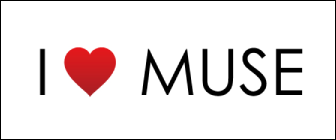How the PCB Assembly Processes Works
- このトピックは空です。
-
投稿者投稿
-
andresschreiner
ゲスト<p>What is the PCB Assembly? Also called PCBA, printed circuit board manufacturing can be a pretty complex concept to understand. But just why, you might ask. Well, the reason is that PCB production isn’t quite the same as conventional printed circuit board manufacturing, also called PCB. The PCB manufacturing process involves more than simply placing the circuit onto a piece of circuit board – which is called “printed circuit board” – in a printer.</p>
<p>In the case of pcb assembly process, there are three important players involved in this process: the manufacturer or the supplier, the factory where the components are produced and finally, the customer (you). These three players all have their own goals, processes and techniques when it comes to producing printed circuit boards. The manufacturer wants to make sure that their product will satisfy the needs and desires of their customers. This is why they invest a lot of time and effort in researching and experimenting with different methods for producing components, working out the kinks and trying out different technologies. To do this, they need to have solid knowledge and expertise on the pcb assembly process.</p>
<p>The first step in pcb assembly is to design the component. There are many companies today that offer services for designing and creating components. You can either use an online service provider, which will provide you with several design options, or you can create a PCB blueprint from scratch. A good PCB blueprint is basically a drawing of what the final product will look like. It’s worth looking at some PCB designs if you’re looking for an authentic feel and appearance. The smt paper stock used for this method of design is much thinner than that used during the actual PCB assembly process.</p>
<p>The second step in the design process is to work out a method of putting the component onto the PCB surface. Most people are used to using hole punching and solder paste to connect parts together, but there are other methods that are less common such as through-hole assembly and surface mount technology. Through-hole assembly uses a small, shaped hole (a tab) to connect the component and glue it into place, while surface mount technology uses a mounting plate to hold the PCB surface so that it can’t come loose during production. This method means that the component is in constant contact with the PCB surface preventing it from moving during production.</p>
<p>The final step in the design process is to choose the best method for putting your electronic components together. Some companies will allow you to download their e-book or presentation that walks you through the entire process step by step, while others will simply provide you with electronic parts list and full color schematics to get you started. Most PCB manufacturers have interactive website and support systems to help you through the design and manufacturing processes. Some even offer technical support through phone and email.</p>
<p>The final step in the design and production of your electronic component is called “reflow soldering”. When you want to solder a component to the PCB, rather than using a flux pen, reflow is used to heat up the plastic component and allow it to stick to the board. This allows you to solder directly to the electronic components, avoiding the need to use flux. Although reflow soldering takes more time and material than most other methods, this method has the advantage of allowing you to easily test and replace faulty or damaged components, which can reduce cost and lead to fewer production mistakes.</p> -
投稿者投稿








